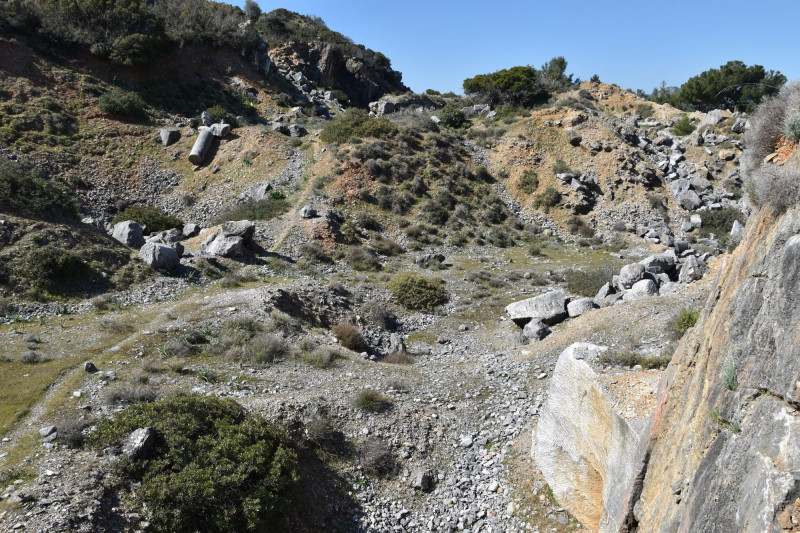The quarry fueled with gray marbles the construction of many monuments of ancient Mytilene and reached many areas of the Roman Empire.
Just four kilometers north of the city of Mytilene, on a hill on the road to the village of Moria, is one of the most impressive and at the same time unknown ancient monuments.
The Moria quarry supplied gray marbles the construction of many monuments of ancient Mytilene, such as the ancient theater of the city and the Roman aqueduct.
Marble was also known as a “Lesbian stone” or in the Roman years as “Marmor Lesbium”.
The marbles also arrived in many parts of the Roman Empire, from Rome itself to Asia Minor Pergamon. It is also reported that it has been widely used for the construction of statues, such as the Aphrodite of Capitol, Giulia Pia, located today in the Vatican Museum and others.
Ancient Technology Monument – How was the extraction done
The ancient quarries are classified as a monumental value to the highest degree. In addition, in the Aegean, they become even more important. But they are also a very good example of ancient technology.
The Moria ancient Mararos quarry comprises nine basic mining cavities and many smaller in the periphery and occupies an area of 200 meters long, 120 meters wide and depth at 30 meters.
For the extraction of the material, as in most ancient quarries, They opened on the rock sections with a scalable layout. Indeed, the traces of tools and technical quarrying on the rocks are evident on the surfaces of marble tumors.
Within these incisions they made wedge holes for the installation of wooden wedgeswhich achieved the secondment of parallelippers blocks. The traces of the tools on the walls of the pit form the pattern of fish, or a herringbone, a characteristic of the quarries of Roman times.
The rest of the marble tumors processing throughout the monument indicate the large amount of the product produced. While the number of semi -workers who remain scattered and impress is very large.
Crystalline limestones are one of the oldest rocks and appear in many areas of Southeast Lesvos. These are rocks formed during the Triadian geological period, 200-250 million years ago, from sediments that were on the sidelines of the ocean of Tithos, the ocean that covered the region of present-day southern Europe and North Africa. In the crystalline limestones, in the area of Moria, impressive megalodon has been preserved, ”Mataranga said.
No storage the space has become dump
Unfortunately, the aesthetic degradation of parts of the ancient quarry that has been described as a protected archaeological site is also impressed, but some use it to reject all kinds of rubbish.
Also other parts of the monument that unfortunately has not been fenced by the modern mining activity that was interrupted just 50-60 years ago, and caused damage to its form, or by destroying lime semi-bourgeois.
Source :Skai
I am Frederick Tuttle, who works in 247 News Agency as an author and mostly cover entertainment news. I have worked in this industry for 10 years and have gained a lot of experience. I am a very hard worker and always strive to get the best out of my work. I am also very passionate about my work and always try to keep up with the latest news and trends.











